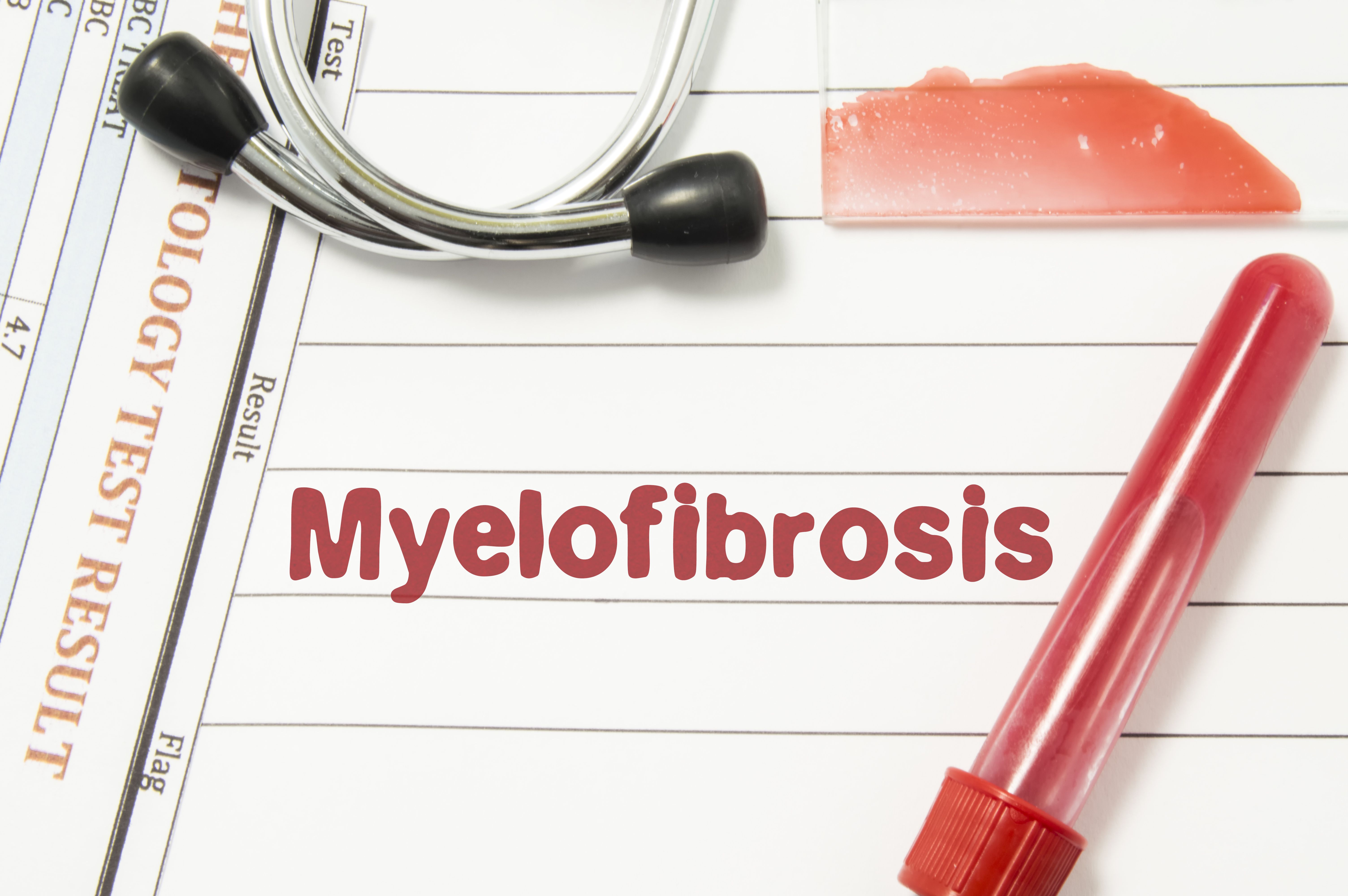- Center on Health Equity & Access
- Clinical
- Health Care Cost
- Health Care Delivery
- Insurance
- Policy
- Technology
- Value-Based Care
Enhancing Outcomes and Quality of Life for Patients With Myelofibrosis
A phase 3 trial in symptomatic and anemic patients with myelofibrosis (MF) met its primary end point, seeing a significant symptom reduction at 24 weeks with momelotinib vs danazol.
The phase 3 MOMENTUM (NCT04173494) trial demonstrated rapid improvements in patient-reported outcomes associated with momelotinib in patients with anemia and symptomatic myelofibrosis (MF), which continued to improve over time.

“Notably, to our knowledge, MOMENTUM is the first phase 3 trial to include Myelofibrosis Symptom Assessment Form (MFSAF) TSS [Total Symptom Score] response rate as the primary end point,” the researchers wrote. “Here, we report results from the MOMENTUM study evaluating the effect of momelotinib on patient-reported health status and health-related QOL [quality of life], including the impact on fatigue and physical function.”
The randomized, double-blind, global study was published in Hemasphere. Patients included in the study had previously received approved Janus kinase inhibitor therapy for MF, a rare cancer, for 90 days or more and were randomized 2:1 to receive momelotinib 200 mg orally once daily plus a placebo or danazol 300 mg orally once daily plus a placebo for 24 weeks.
The primary end point was MFSAF TSS response rate at week 24, with a 50% or more reduction in mean TSS over the 28 days immediately before or at the end of week 24 compared with baseline rates.
A total of 195 patients were included in the study, of whom 130 received momelotinib and 65 received danazol. Of these patients, 94 (72.3%) in the momelotinib group and 38 (58.5%) in the danazol group completed treatment. The most common reasons for early treatment discontinuation were adverse events and patient decision.
The MFSAF TSS response rate was significantly higher (P = .01) with momelotinib (24.6%) vs danazol (9.2%) at week 24. Additionally, the TSS response rate was significantly higher (P = .046) with momelotinib (16.2%) vs danazol (6.2%).
Additionally, the OR of response in the overall treatment period was 2.5 (95% CI, 1.2-5.1) and the treatment effect favoring momelotinib was observed as early as at 8 weeks and onward. At week 24, the OR was 2.3 (95% CI, 1.0-5.4).
Furthermore, the researchers observed that median improvements from baseline to week 24 were greater in all symptom aspects with momelotinib compared with danazol. The greatest treatment improvement differences were seen in:
- Night sweats (–1.27; 95% CI, –2.00 to –0.53)
- Abdominal discomfort (–1.11; 95% CI, –1.91 to –0.31)
- Bone pain (–1.19; 95% CI, –1.92 to –0.46)
- Rib pain (–0.80; 95% CI, –1.54 to –0.05)
Most cancer-related subscale data were available for 68.5% of patients in the momelotinib group and 53.8% in the danazol group. Momelotinib was superior to danazol, with a significant proportion difference of 20% and a response rate difference of 0.21 (95% CI, 0.07-0.33; P = .005).
Moreover, the proportion of patients who reported an improvement in pain, fatigue, insomnia, social functioning (ability to fulfill one’s role within work, social activities, and relationships with partners and family), and role functioning (ability to perform daily activities, leisure time activities, and work) was significantly higher with momelotinib compared with danazol (P < .05).
These findings suggest both rapid and durable response benefits with momelotinib compared with danazol for symptomatic and anemic patients with MF, and greater improvements for disease- and cancer-related fatigue and physical functioning at week 24.
“Taken together, the MOMENTUM results demonstrated superior symptom response with momelotinib compared with danazol in patients with MF who were symptomatic, anemic, and previously treated with an approved JAK inhibitor,” wrote the researchers.
Reference
Mesa RA, Harrison C, Palmer JM, et al. Patient-reported outcomes and quality of life in anemic and symptomatic patients with myelofibrosis: results from the MOMENTUM study. Hemasphere. 2023;7(11):e966. doi:10.1097/HS9.0000000000000966
Preventing Tomorrow’s High-Cost Claims: The Rising-Risk Patient Opportunity in Medicaid
November 6th 2025For Medicaid care management, focusing on rising-risk patients is more effective than targeting high-cost claimants, whose spending tends to decrease over time due to regression to the mean.
Read More
